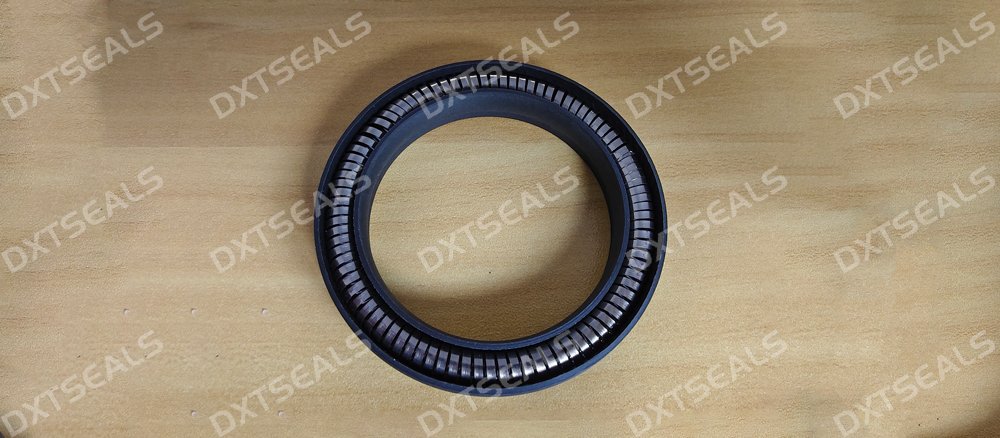
In industrial engineering, sealing components play a critical role in maintaining system integrity, preventing leaks, and enhancing performance. Over the decades, sealing technology has seen significant evolution—from the humble O-ring to today’s high-performance spring-energized seals (Variseals®).
This article explores the journey of sealing innovation, highlights key differences between traditional and modern sealing solutions, and explains how DXTSEALS continues to support industrial progress with cutting-edge designs.
🟠 The Foundation: O-Rings in Industrial Sealing
O-rings have long been the backbone of sealing systems in industries ranging from automotive to aerospace. Made from elastomeric materials such as NBR, EPDM, and FKM, O-rings are prized for their simplicity and cost-efficiency.
O-Ring Advantages:
-
Easy to install and replace
-
Low production cost
-
Versatile across a range of pressures and fluids
Limitations:
-
Prone to compression set and degradation
-
Ineffective in extreme temperatures or chemically aggressive environments
-
Cannot compensate for thermal expansion, wear, or misalignment
As industries advanced and operational environments became more demanding, O-rings alone could no longer meet performance expectations.
🚀 The Upgrade: Emergence of Spring-Energized Seals
To overcome the limitations of elastomeric seals, engineers developed spring-energized seals—also known as Variseals®. These seals integrate a high-performance polymer jacket (such as PTFE, PEEK, or UHMW-PE) with a metal spring, which applies consistent pressure to maintain contact with the sealing surface.
Spring-Energized Seal Benefits:
-
Excellent chemical resistance
-
Broad temperature range (-100°C to 300°C and beyond)
-
Maintains sealing force despite wear or system movement
-
Ideal for dynamic applications with rotary or reciprocating motion
-
Extended service life with minimal maintenance
✅ Result: A reliable sealing solution even in the most extreme conditions.
🔄 Key Differences: O-Rings vs. Spring-Energized Seals
| Feature | O-Rings | Spring-Energized Seals |
|---|---|---|
| Material | Elastomers | PTFE/PEEK + stainless steel spring |
| Temperature Resistance | Moderate | Extreme (Cryogenic to 300°C+) |
| Chemical Compatibility | Limited | Excellent |
| Dynamic Application Support | Poor to moderate | Excellent |
| Longevity & Reliability | Moderate | High |
| Cost | Low | Higher initial, lower lifecycle |
🏭 Where Are Spring-Energized Seals Used?
Due to their durability and adaptability, spring-energized seals are now used in:
-
Aerospace and aviation
-
Oil & gas exploration
-
Pharmaceutical and food processing
-
Cryogenics and vacuum systems
-
Chemical handling and pumps
At DXTSEALS, we offer customized Variseal® solutions designed to outperform conventional seals and meet precise client specifications.
🔧 DXTSEALS: Leading the Future of Industrial Sealing
With decades of experience, DXTSEALS has evolved alongside sealing technology. Our engineering team works closely with customers to:
-
Select appropriate sealing materials and profiles
-
Design seals for extreme temperature, pressure, or chemical environments
-
Support rapid prototyping and low-volume custom runs
-
Optimize sealing systems for longer service life and lower maintenance
🛠️ Whether you’re upgrading from O-rings or need a tailored solution for a complex application, DXTSEALS delivers industrial sealing excellence.
🔚 Conclusion: Evolving from Simple to Superior
The evolution from O-rings to spring-energized seals reflects the industrial world's shift toward higher precision, reliability, and performance. While O-rings remain useful in many standard applications, modern industries increasingly demand sealing solutions that go beyond limitations.
Spring-energized seals represent the future of sealing—and at DXTSEALS, we’re proud to be at the forefront of that future.
🔗 Explore advanced sealing solutions at www.dxtseals.com or contact us to discuss your custom sealing needs.
